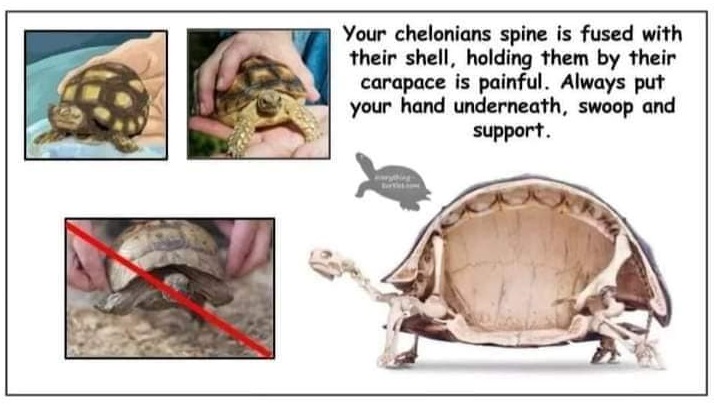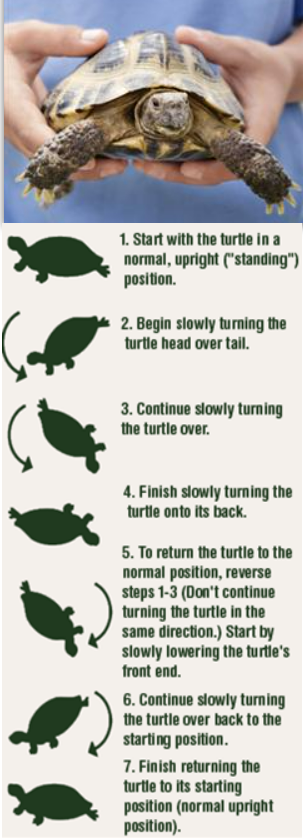
ANIMALS 101 – HOW TO HANDLE THEM CORRECTLY AND WITH CARE.
Many of us grew up with the tale of the rabbit and the tortoise, with a good life lesson in it, however this lesson didn’t include how to care for them or how to handle these creatures physically. That is what we will look at today.
We do not support keeping tortoises or rabbits as pets and especially not for kids. One of the biggest reasons for this is because there are very specific ways in which they should be handled and doing it wrong can be fatal! If you do decide to get any one of these species, then you NEED TO DO PROPER RESEARCH to meet all their needs! This includes, but is not limited to; food, enclosure, enrichment, social needs, behaviour and more.
ABOUT RABBITS
- Rabbits have fragile skeletons and a powerful kick. This means they can easily break their backs, especially if not held correctly.
- Their dietary requirements are not so straight forward and many do not understand this! One example: Carrots are to rabbits like sweets are to a child.
- The protocols (pre & post) with sterilization are different from other pets. Most antibiotics can kill them, so you need an exotic pet vet!
- They do not vocalize discomfort as much as a chinchilla or a dog, which means if they are screaming, it is already very sore/stressful and they can easily die from this.

TIPS ON HANDLING RABBITS
NEVER PICK THEM UP BY the ears, scruff, tail or legs. It would be extremely stressful, will hurt and is highly likely to injure them badly!
START EARLY
Get your rabbits used to human touch by socializing them early. Rabbits who aren’t handled regularly from a young age, or roughly handled at any age, may find human contact distressing.
BE GENTLE
Move slowly and talk quietly around rabbits so not to startle them. They’re more likely to be relaxed in a quiet and calm handling environment.
PICK UP FROM THE GROUND
Picking rabbits up when you’re close to ground level is less likely to scare them, and is also safer as it helps prevent them being dropped by accident from a height. We advise all interaction to take place on ground level when possible.
COVER EYES
This can help them feel more relaxed whilst being held, but you should ensure the nares (nostrils) aren’t obstructed. You can cover their eyes with a towel or in the crook of your arm.
ALWAYS SUPERVISE CHILDREN
Supervise children at all times, and only adults or responsible older children should be allowed to pick up rabbits.
BE SAFE
Safety is paramount when handling rabbits as their fragile spines can be seriously, or even fatally damaged if they feel insecure or struggle when held.
- Hold rabbits gently, but firmly and ensure one hand supports their back and hindquarters at all times.
- Help them feel secure by holding all four feet against your body.
- Avoid placing rabbits on slippery surfaces. Placing a towel down can help make rabbits feel more secure.
Watch this video on how to handle a rabbit or look at the Wikihow pictures.

ABOUT TORTOISES
REMEMBER THEY ARE NOT “IN” THEIR SHELLS, THEY “ARE” THEIR SHELLS. They are born with one and will keep only that one.
Pyramiding is a shell deformity sometimes found in captive tortoises, in which the shell grows unevenly resulting in a pyramid shape underlying each scute.
If you move a tortoise out of the road then it should be in the same direction that they were going.
When picked up in nature they are usually dinner, so this might stress them out, even if you do not plan to eat them!
Also read: ANIMALS 101 – DECODING YOUR DOG’S BARK
HANDLING A TORTOISE/TURTLE
Mid-Atlantic Turtle & Tortoise Society advises as follow:
- Hold them firm enough to not let them drop (watch back legs), but not too hard to hurt them.
- Don’t lift them high of the ground. This will be very scary for them!
- REMEMBER the shell of a turtle/tortoise is sensitive to touch, can be injured and can break. It is a living and growing part of the tortoise/turtle.
- See picture below on holding them. Those with calcium deficiency, some diseases, young ones or certain tortoises/turtles have softer shells and you can hurt them when picked up incorrectly.
- BOTH HANDS need to be used for SUPPORT.
- Never complete a 360⁰ circle when you turn them. Only 180⁰.
- Rotate them SLOWLY and never side to side. It has to be tail over head or head over tail. See picture attached.
- Do not hold them on their back for any longer than absolutely necessary!
- Never pick them up by the legs or tail, it can dislocate and will be very painful.
- Put them down slowly and gently to not cause damage to their legs, organs or shell. Visit their website for more info.

REMEMBER!
- Never release a captive animal into the wild! They will not be able to care for themselves. Surrender them to your nearest SPCA, the NSPCA wildlife unit, your nearest reputable rescue organisation or a near-by wildlife rehabilitation centre.
- If you see neglected rabbits or tortoises/turtles (any animal) please REPORT it to your local SPCA or the NSPCA.
- Check your local BYLAWS on whether you need a PERMIT for keeping them in your province as well as possible travel permit when you move them.
- If you’re concerned about your rabbits or tortoises’s behaviour, seek veterinary advice, from an exotic vet, to rule out any form of illness or injury that could be causing problems. Read more below on choosing the right veterinarian as all vets are not qualified to treat exotic pets!
Read more on rabbit sterilization and questions to ask your veterinarian.
- PLEASE STERILIZE YOUR RABBITS and other pets! Rabbits can have a litter almost every month. Hundreds of rabbits are surrendered daily, because there are just not enough homes.
- Want a rabbit? Then please ADOPT, DON’T SHOP. Contact Critter Rescue SA for free care sheets for rabbits or to adopt. Another great rabbit resource is The House Rabbit Society.
Thanks for tuning in! Next week we will look at safety tips when it comes to hot weather and your pets.
WHEN YOU KNOW BETTER, DO BETTER!